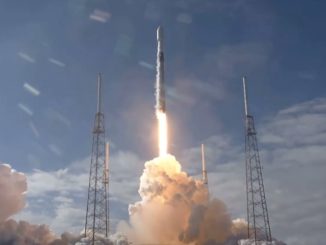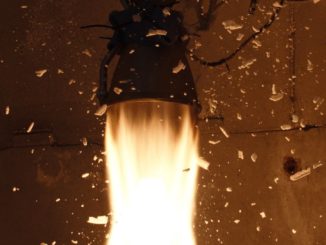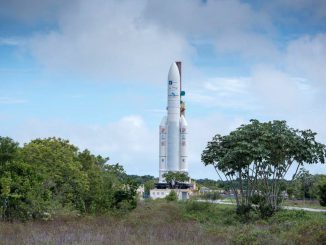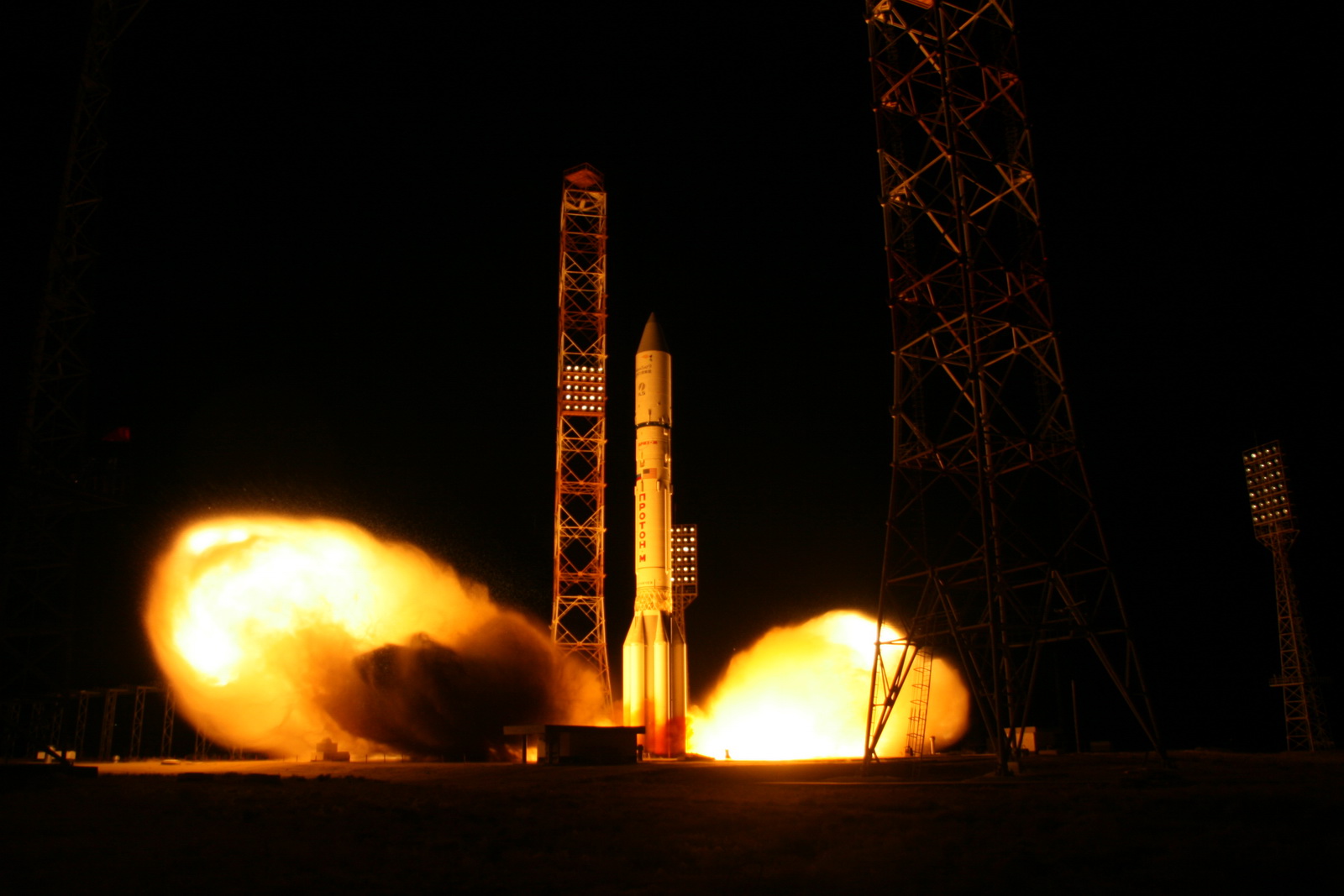
AsiaSat’s most powerful communications satellite, built by Space Systems/Loral in California to reach developing markets in Myanmar, Indonesia and other parts of the Asia-Pacific, rode a Proton rocket and Breeze M upper stage Thursday into orbit ranging more than 22,000 miles above Earth.
The 191-foot-tall (58-meter) Proton rocket took off from the Baikonur Cosmodrome in Kazakhstan at 1852:16 GMT (2:52:16 p.m. EDT) Thursday, soaring into an overcast sky at the historic Central Asia spaceport, the site of the Space Age’s first satellite launch 60 years ago next week.
Six RD-276 main engines, consuming a blend of hydrazine and nitrogen tetroxide propellants, boosted the Proton rocket into the sky with nearly 2.5 million pounds of thrust.
The first stage shut down and jettisoned two minutes into the mission as the Proton climbed east-northeast from Baikonur, and two more Proton stages conducted engine firings as designed before deploying a Breeze M upper stage to finish the job of placing the AsiaSat 9 satellite in orbit.
Five main engine burns by the Breeze M thrust AsiaSat 9 into successively higher orbits and maneuvered the 13,536-pound (6,140-kilogram) spacecraft on a trajectory closer to the equator.
International Launch Services, the U.S.-based company in charge of Proton launches with commercial payloads, announced the successfully separation of AsiaSat 9 more than nine hours after liftoff.
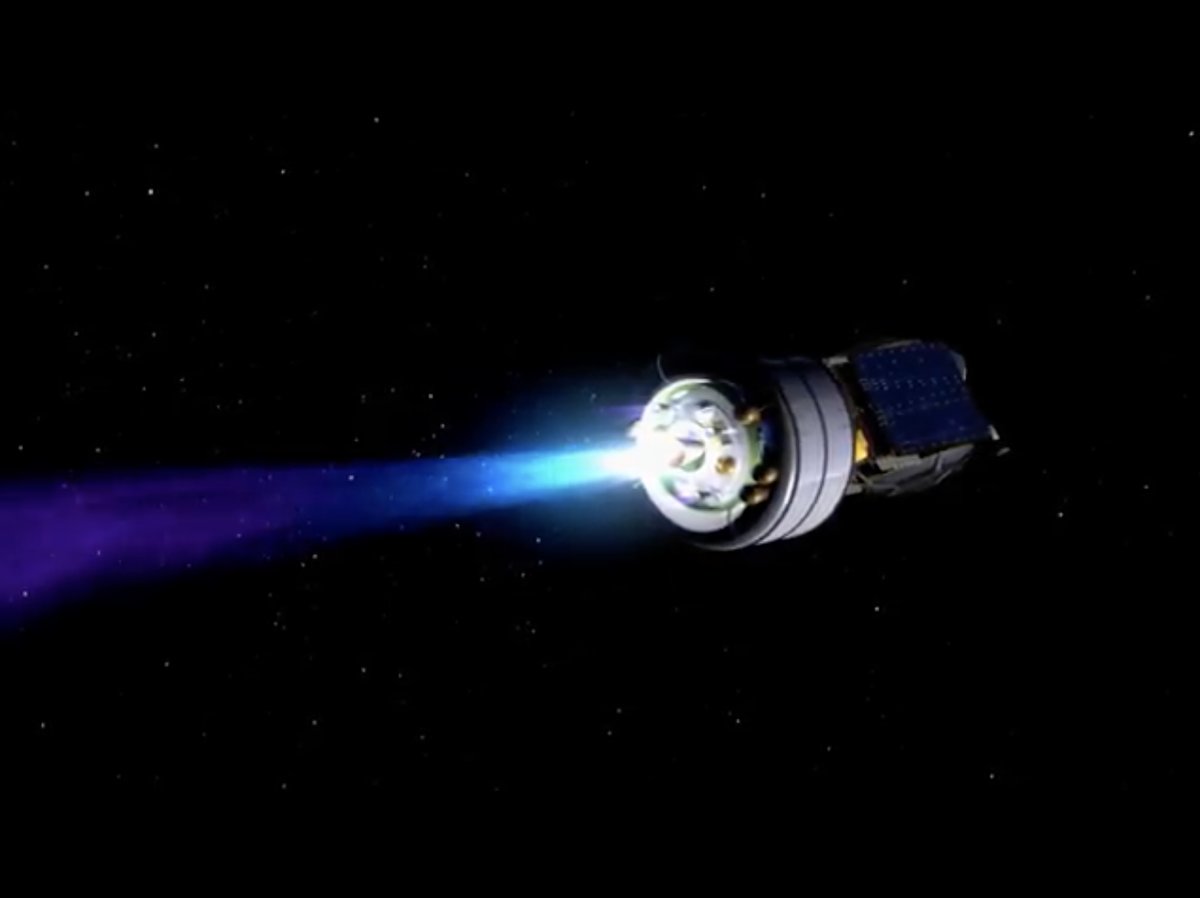
“This is our fifth launch with AsiaSat over our long history with them, having launched over half of AsiaSat’s operational fleet,” said Kirk Pysher, president of ILS. “We are proud to have played a key role in the growth of AsiaSat’s business over the years. We appreciate the AsiaSat, ILS, Khrunichev, SSL mission teams for their dedication to ensuring a successful launch.”
The Breeze M aimed to release AsiaSat 9 into an elliptical geostationary transfer orbit with a low point of 2,513 miles (4,045 kilometers), a high point of 22,236 miles (35,786 kilometers), and an inclination of 23.4 degrees.
AsiaSat said a ground station near the company’s headquarters in Hong Kong acquired the first signals from AsiaSat 9 after the launch, verifying the satellite’s health following liftoff.
Based on the SSL 1300 satellite design, AsiaSat 9 will raise its orbit through several firings of its own thruster in the coming weeks before settling into a circular geostationary-type orbit along the equator at 122 degrees east longitude.
“With Proton’s unique optimized delivery to orbit, extending the lifetime of the AsiaSat 9 satellite, AsiaSat is once again creating exceptional value for our services in Asia,” said Andrew Jordan, president and CEO of AsiaSat. “AsiaSat 9 will provide additional and enhanced services to a wide region of Asia and some ground-breaking capabilities in power and efficiency in some new regions. Sincere thanks to all of the AsiaSat 9 team members for a perfect mission and launch.”
The new satellite will replace the AsiaSat 4 spacecraft at the 122 degrees east orbital location. AsiaSat 4 launched from Cape Canaveral in April 2003 aboard an Atlas 3B rocket.
AsiaSat’s six existing satellites currently support more than 700 television and radio channels, reaching more than 830 million TV households across the Asia-Pacific region.
Embarking on a 15-year mission, AsiaSat 9 will relay direct-to-home television broadcasts, video programming, and broadband data signals across a coverage zone stretching from the Middle East to Australia. The high-power satellite carries 32 Ku-band and 28 C-band transponders, plus a Ka-band payload.
AsiaSat 9’s C-band payload will reach users from the Persian Gulf, through China, to Siberia, Japan, Australia and New Zealand. The Ku-band capacity is divided into five beams, covering China, Mongolia, Myanmar, Indonesia, and Australia and New Zealand.
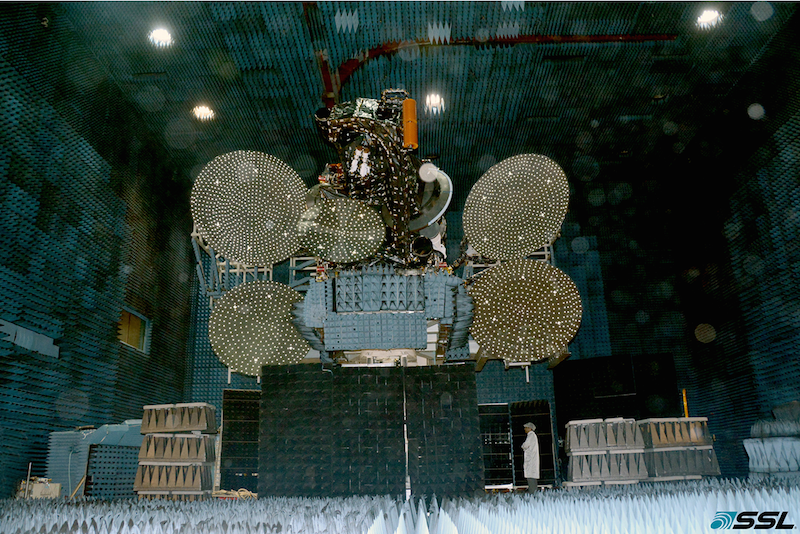
“AsiaSat 9 will be our most powerful satellite ordered to date, and we’re very excited about it because it will open up new markets with dedicated high-power Ku-band beams for Myanmar, Indonesia and Mongolia,” Jordan said in remarks before Thursday’s launch.
The fresh satellite poised to join AsiaSat’s fleet “will significantly reduce the cost per bit to our customers, and will open up new markets in areas such as video applications, data and mobility services for maritime and aviation broadband,” Jordan said.
The launch of AsiaSat 9 was the second commercial Proton flight of the month managed by ILS.
The Amazonas 5 communications satellite, another craft manufactured by SSL, launched Sept. 11 for Madrid-based Hispasat.
One more Proton launch is scheduled before the end of the year to loft a payload for the Russian government. The next mission in ILS’s manifest is slated for the second half of 2018 with a telecom satellite for Eutelsat and Orbital ATK’s first Mission Extension Vehicle, a pioneering robotic servicer able to dock and take propulsive control of aging satellites in geostationary orbit.
Email the author.
Follow Stephen Clark on Twitter: @StephenClark1.

